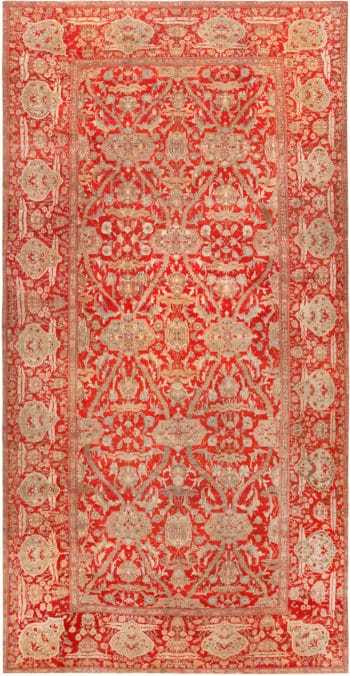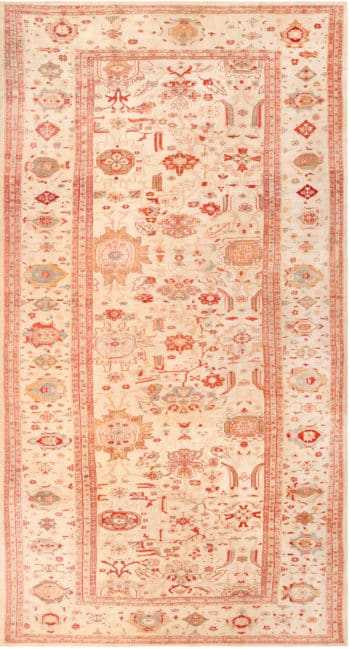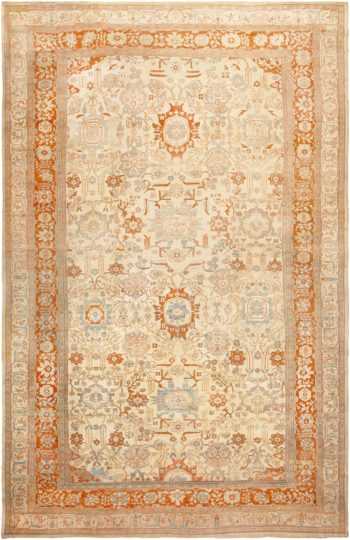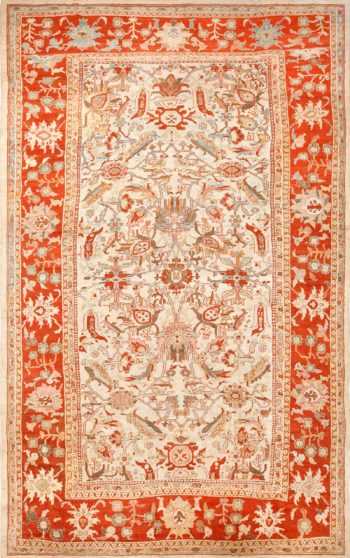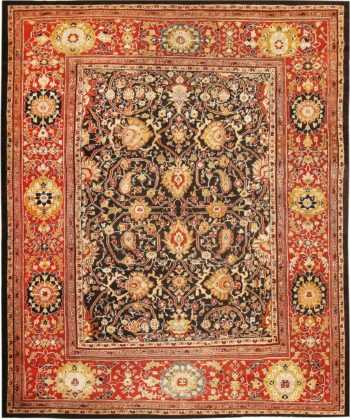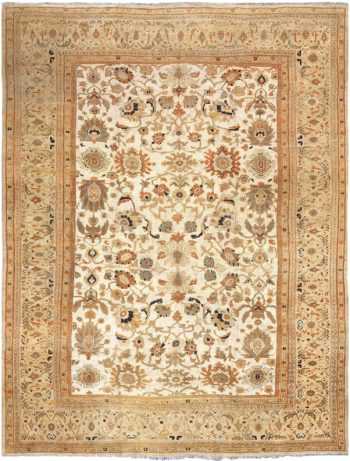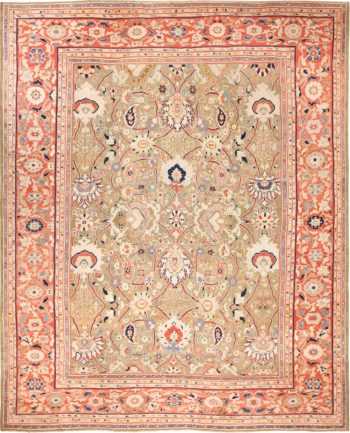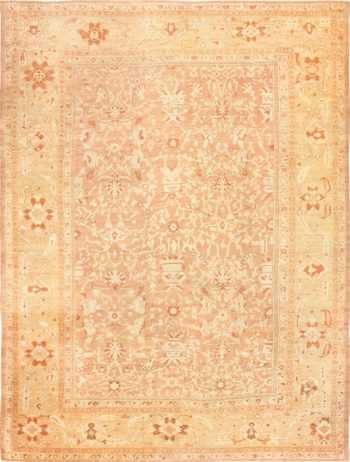Ziegler Rugs
Persian antique Ziegler Sultanabad area rugs:
Impressive Oversized Antique Persian Ziegler Sultanabad Rug 72255
$185,000.00Size: 16 ft 3 in x 32 ft (4.95 m x 9.75 m)Oversized Luxurious Ivory Antique Persian Ziegler Sultanabad Rug 72353
$265,000.00Size: 14 ft x 26 ft (4.27 m x 7.92 m)Magnificent Oversized Ivory Background Antique Persian Ziegler Sultanabad Rug 46452
Size: 14 ft 5 in x 22 ft 3 in (4.39 m x 6.78 m)Beautiful Large Ivory Persian Antique Ziegler Sultanabad Rug 49322
$149,000.00Size: 12 ft 4 in x 20 ft (3.76 m x 6.1 m)Black and Red Antique Persian Ziegler Sultanabad Rug 45212
$56,000.00Size: 13 ft 7 in x 16 ft 7 in (4.14 m x 5.05 m)Antique Ziegler Sultanabad Rug From Sigmund Freud 3382
$185,000.00Size: 12 ft 9 in x 16 ft 7 in (3.89 m x 5.05 m)Large Antique Ziegler Sultanabad Persian Rug 49002
$88,000.00Size: 13 ft 3 in x 16 ft 3 in (4.04 m x 4.95 m)Large Decorative Antique Persian Ziegler Sultanabad Rug 48762
$52,000.00Size: 11 ft x 15 ft (3.35 m x 4.57 m)
Learn More About Persian Antique Ziegler Sultanabad Rugs and Carpets
Ziegler Sultanabad Rugs – These incredible Persian carpets were woven in Sultanabad around the 19th century’s last quarter, with the intent to appeal to more Western tastes. In the late 1800’s, in Sultanabad, a small town in NW Persia, a Swiss firm, the Ziegler Company, based in Manchester, England set up shop.
The Ziegler rugs were created by the company which began exporting carpets from Persian and importing the rugs to England and America where the demand was high. Their antique rugs are similar to Mahal’s but are distinguished by their sparsely drawn, large scale, over-sized designs and use of soft colors. They are lovely rugs that are enormously popular with decorators.
Antique Persian Sultanabad Ziegler Rugs
Ziegler Sultanabad rugs carpets received their start in the late 1870’s. This was mostly due to a subsidized one of a kind commission. Zeigler & Co. of Manchester, England invested the original capital, which in turn led to the name. Unlike its predecessors, the Ziegler Sultanabad’s finely constructed weave, exquisite patterns, and delicate colors left a distinguishable mark on buyers then and for collectors today.
The Persian style rugs met great success in Europe, especially in Western markets who saw talent in the inspiring English translations and value in the oversized proportions. Westerners also at the time took more joy in elaborate decorations.
Today, interior designers and lovers of fine art enjoy the blended beauty of exotic and classical balance the Sultanabad Ziegler rugs bring to a room. Others enjoy the looser weave Sultanabad rugs for their rich history, filled with tribal, Persian Court, and Garden design.
According to the growing niche market, many people prefer the classic Sultanabad antique carpets over others because they’re the best representation of the late 19th century and early 20th century Persian style rugs. This makes them a suitable art investment or for personal décor. Their desirability will only continue to grow with their rarity.
More about the history of Persian Ziegler rugs
Ziegler rugs, are a type of Persian carpet that has gained popularity for its unique departure from traditional Persian designs and blends of softer, more muted color palettes with more open large scale design patterns.
The history of Persian Ziegler rugs is quite intriguing:
- Origins and Development: The origins of Ziegler rugs can be traced back to the late 19th century during the Victorian era. European markets, particularly England, had a growing demand for Oriental rugs, including those from Persia (modern-day Iran). However, the traditional color palettes and bold designs of Persian rugs often did not match the tastes of European consumers at the time.
- Adaptation for Western Markets: Enter the Ziegler Company, a Swiss firm headed by a man named Ziegler, which is believed to have played a pivotal role in adapting Persian rug designs to better suit Western preferences. They worked with local weavers in Persia to create rugs that combined the traditional craftsmanship and patterns with a more subdued and softer color palette. These rugs were meant to cater to the European market’s demand for more muted, pastel colors that would blend well with Western interior décor.
- Design Elements: Ziegler rugs typically feature intricate floral and geometric patterns, often inspired by traditional Persian designs. These designs are woven using high-quality wool and can incorporate a variety of motifs such as medallions, vines, and intricate borders. The designs are elegant and timeless, making Ziegler rugs a versatile choice for various interior styles.
- Muted Color Palettes: One of the defining features of Ziegler rugs is their muted color palette. Unlike the vibrant and bold colors found in many traditional Persian rugs, Ziegler rugs feature softer, more understated hues. This was a deliberate design choice to cater to the preferences of Western consumers.
- Revival and Modern Production: Ziegler rugs experienced a resurgence in popularity in the latter half of the 20th century and continue to be produced today. Modern Ziegler inspired area rugs often maintain the essence of the original designs while incorporating contemporary elements and color variations. These rugs are still handcrafted by skilled artisans in regions known for their rug-making traditions.
- Collector’s Items: Over the years, Ziegler rugs have become highly sought-after collector’s items. Their unique blend of Persian artistry and Western aesthetics, along with their historical significance, has contributed to their value in the rug market.
In summary, the history of Persian Ziegler rugs is characterized by their adaptation to Western tastes during the late 19th century, resulting in the creation of rugs that blend aspects of older Persian designs with muted color palettes and more modern design influences. These decorative Persian area rugs, which were woven in the Persian city of Arak / Sultanabad continue to be cherished for their timeless beauty and artistic craftsmanship.

